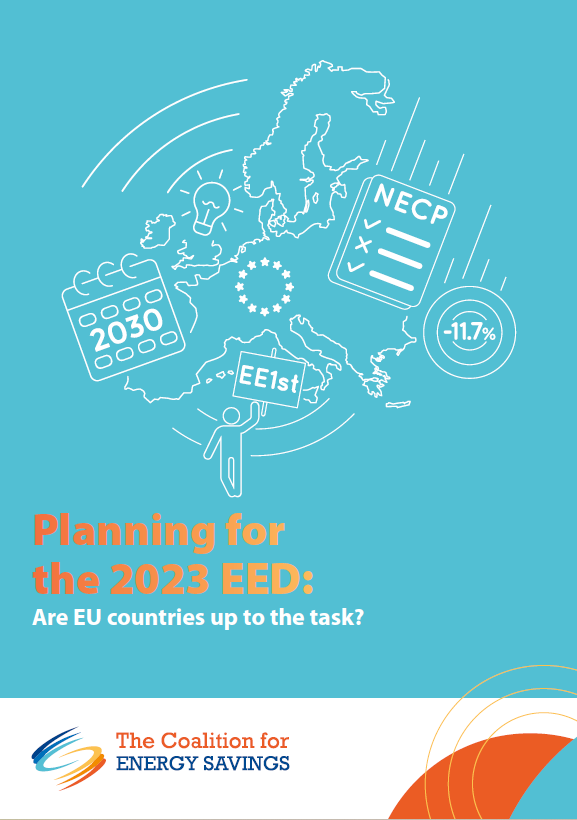Planning for the 2023 EED: Are EU countries up to the task?

With only seven years to achieve the new 2030 EU energy efficiency target, national measures to implement the Energy Efficiency Directive (EED) must be put in place without delay to accelerate energy saving actions across sectors.
While the 2023 EED has just entered into force and Member States must transpose the new requirements into national law by October 2025, they should have already started designing additional measures to start implementing the EED in the draft update of their National Energy and Climate Plans (NECPs)
This report thoroughly assesses whether the submitted draft NECP updates correctly reflect the new provisions of the 2023 EED, particularly its Article 3 (energy efficiency first principle), Article 4 (Energy efficiency targets), Article 5 (public sector leading on energy efficiency), Article 6 (exemplary role of public bodies’ buildings) and Article 8 (Energy Savings Obligation).
RELATED ARTICLES
Planning for the 2023 EED: are EU countries up to the task? Updated analysis, April 2024
The update of the National Energy and Climate Plans (NECPs) is a pivotal first step to ensuring that the objectives of the Fit For 55 Package and REPowerEU are met and the revised legislation, including the 2023 Energy Efficiency Directive (EED), is correctly...
2040 Climate Target: No decarbonisation without energy savings.
On February 6, the European Commission published the communication on the 2040 climate target accompanied by an Impact Assessment (IA). It recommends that the EU cuts its greenhouse gas (GHG) emissions by a net 90% by 2040. The below briefing reviews how energy...
The new 2023 Energy Efficiency Directive: Guidance for planning and implementation
With less than seven years to go to meet the 2030 EU energy efficiency target, the implementation of the EED recast must start with no delay. Despite the recast of the EED not yet published in the EU Official Journal, Member States must already integrate several new...
